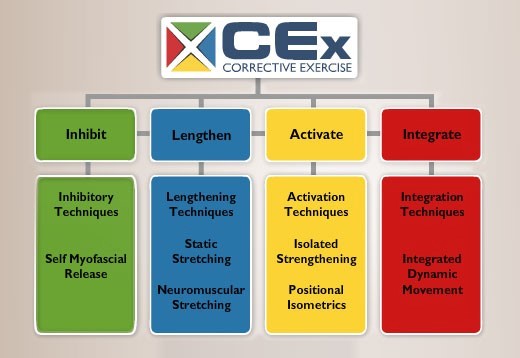With this article, we’ll be touching on the following:
- The benefits of Foam Rolling.
- When to practice Foam Rolling.
- Foam Rolling for correctional exercise.
- The effects on mobility.
- Foam Rolling for recovery.
- Putting it all together. When the foam roller is involved,
Things to Remember
When the foam roller is involved, most of us do it for one of the following reasons. You’re injured, trying to prevent an injury; your muscles are tight, trying to improve your mobility; to warm up before you train, and to be honest in a lot of cases it is because we’ve seen a thousand people do it and presume it’s the right thing to do. All of this is cool. Somebody somewhere will be doing it for one of these reasons, and it may be correct.
The biggest things you need to know with foam rolling (FR) is there are no absolutes. As said in my last article;
“In all honesty, there is no absolute. To say there is a definite answer one way or another would be ridiculous and downright stupid on any coach’s part. The information out there is crazy inconsistent.
But does foam rolling work? Yes.
Will it work for everyone? No.”
It certainly can be an awesome tool to have in your arsenal. All depends if you actually have a need for it, and if you’re using it correctly. So with that being said, let’s crack on.
The Benefits of Foam Rolling
Foam rolling stimulates receptors in our body. This is done through applied pressure with the aim of relaxing tight tissue which will equal decreased tightness. By adding this external pressure, we roll through our soft tissue causing these receptors to relax us. Being as supple as possible would be the intention. So by applying pressure to points on your body via foam rolling, you’re restoring them to normal function – elastic, recovered, healthy, and pain-free.
When to practice Foam Rolling
The biggest thing for me here, science put aside, is asking does the individual actually NEED to foam roll. We’ll talk later in the article about programming in foam rolling if some sort of movement dysfunction is present.
Pre-workout FR is not always needed, however has crept into nearly every training program I see. If the individual doesn’t need it, is pain-free etc, throw some bad-ass mobility drills at them instead of wasting time FR.
A key element which many individuals miss is utilizing the post-workout window (5 – 15 minutes). As prophesied by the legendary Dr John Rusin, it is an excellent time to add in FR. It taps into the parasympathetic nervous system which allows us to accelerate the recovery process.
If there is a movement dysfunction present, that’s when we bring FR into the mix.
Foam Rolling for Correctional Exercise
So when a dysfunction is presented, it needs to be fixed. If I use the corrective exercise continuum as an example, specifically stage 1:

So what we start to see is that fixing an issue is a global process, NOT just a foam roll element. Combining the stretch, or mobility element in-between/after FR creates a synergistic effect. Couple all of that with a solid strength element, and that’s the beauty which will really start to kick the shit out of your dysfunctions.
One of my personal favourites to clear dysfunctions and save time, which is always a winner, is to superset (put exercises back to back) FR with a mobility drill. Hit the affected areas in an upstream-downstream approach, or an agonist-antagonist fashion as shown below.
Let’s use the ankle as an example as it’s a lovely mobile joint:
1a) Calf FR + Eccentric calf stretch
1b) Tibialis anterior FR + Knee to wall dorsiflexion
Three rounds of this back to back – do this all barefoot.
The effects on mobility
Does Foam Rolling help with mobility, I hear you ask? Well, as seen above putting both FR and mobility drills together in a synergistic fashion certainly can help. However using FR on its own specifically for mobility? Not so much.
Mobility is all about the joints, not just the soft tissue around the joint. And it is the soft tissue around the joint which is exactly what FR is geared to attack. So if we need to clear a joint, FR can’t do this, which means FR won’t help too much with mobility. Mobility will help with mobility. See where we’re going here.
So the big take away from this section is don’t waste your time trying to improve your squat depth by foam rolling. Get rid of that notion and add in some amazing mobility drills. This will certainly improve things and attack all surrounding soft tissue, tendons, ligaments, and fascia.
Foam Rolling for Recovery
Now if you were to take anything away from this article, it should be from this section. I’ll try and keep it brief, as I seem to be pumping out some volume here and at this rate, nobody will get to the end. I’ll bullet point it to saves us some time:
Foam rolling is best used AFTER training!
- This is excellent to aid recovery. Which is awesome as we can train again sooner!
- It taps into the parasympathetic nervous system to facilitate this process.
- It can clear inflammation, decrease DOMS and drive blood into the area – which floods in nutrients and disposes of all the crap that’s built up.
Don’t be afraid to add this in the 5-15 minute post-exercise window. This regeneration period can really do wonders for the ever so important recovery element which is unfortunately missed out oh so much.
To tap into this recovery process, other elements can also be involved:
- Rhythmic or deep breathing.
- Stretching.
- Other Self-Myofascial Release (SMR) techniques.
Putting it all Together
- Foam Rolling has its benefits. Just assess whether you actually need to do it.
- Avoid doing it as part of your warm-up if not needed. You’ll save a butt load of time.
- Instead of this add in a global mobility protocol – the Limber 11 from the absolutely incredible Joe DeFranco works like a dream here (see below video.)
- If you’re still dead set on using it, that’s cool, it’s your decision. Do what makes you happy. Just do me a favour and add a mobility element in between every FR as shown in the above correctional exercise part of this article. Keep it short and sharp. Or do your foam rolling then do the Limber 11. Adding that to every workout will work wonders – believe me on this, I have used it thousands of times!
- Add FR into the 5-15 minute post-training window. This recovery method is phenomenal.
Foam rolling has its place. But to really make the most out of your program, don’t do it for the sake of doing it. If it’s not needed, add in some bad-ass mobility drills, movement prep, activation exercises and a good old-fashioned strength plan. Then you’ll be on the right path.
Coach Sale.
Author - Luke Sale - Head Coach & Mentor

Like what you read? Want to know more?
If you have a question about anything Health & Fitness that you want to see answered in a future article, or even fancy treating your brain & body to a whole day with one of our brilliant Mentors. Please contact us and we will get back to you within 24hrs.
Remember – It is never too late to bulletproof your future self.
